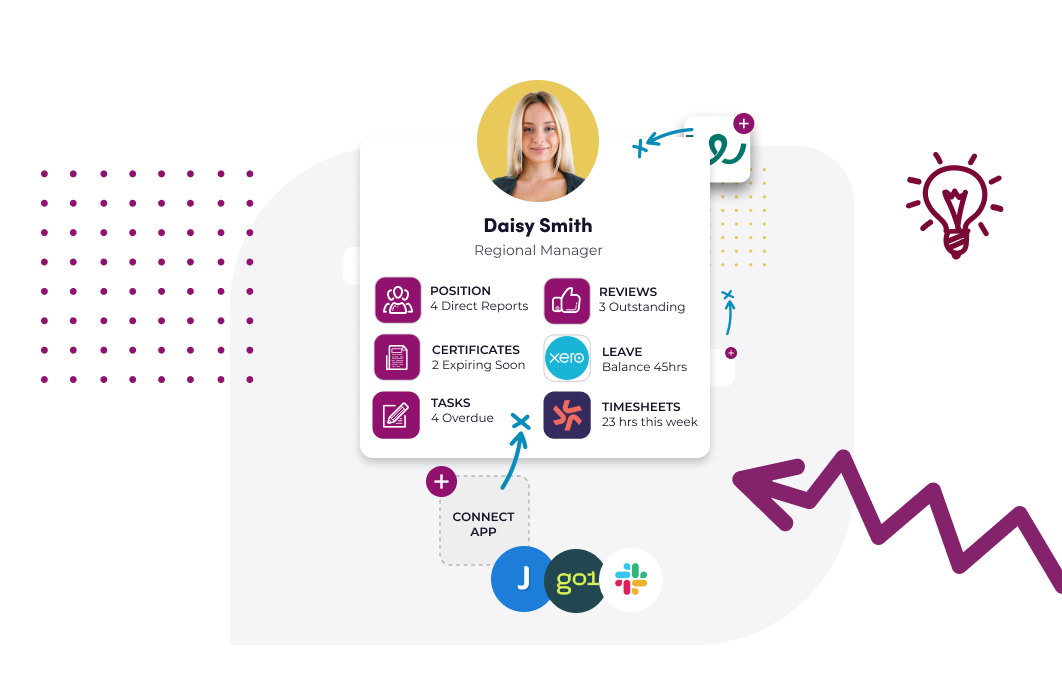As HR tech moves away from “all in one / one size fits all” platforms, we now have many amazing apps that help us create amazing workplaces. One of the challenges that comes out the other end of this is combing data into a single source so you can leverage amazing benefits such as;
- Automation and Operational Efficiency
- Data-Driven Decision-Making
- Streamlining Data Organisation
This article is for the HR leader not quite sure where to start! So let’s dive into the high level steps you need to take to solve this challenge.
Figure Out Your Data Sources and Goals
Before diving into combining your HR data, it’s key to know where your data is coming from and what you’re aiming to achieve. You might have info from various places like your HR system, payroll, recruitment tool and rostering tool. Maybe you’re looking to spot trends, find patterns, determine gender pay gap or create some cool dashboards and reports. Once you’re clear on your sources and goals, you can plan out how to bring the relevant data together and figure out what’s most important to focus on.
TIP: This process is all about knowing what data you need to combine to achieve your goals. Reducing this scope will simplify everything that follows!
Pick the Right Way to Combine Your Data
When it comes to pulling together HR data, how you do it depends on things like how much data you have and how often it changes. Manually entering or copying data is pretty straightforward and cheap, but it’s easy to make mistakes, and it can take a lot of time. Setting up a central database to collect everything can be more efficient and accurate, though it requires a bit more technical know-how. If you need flexibility, data integration using APIs lets you connect to multiple sources without moving the data, but it requires a more advanced setup. And don’t forget data transformation, which ensures everything is in the right format, though it does require some extra processing.
TIP: There are HRIS platforms on the market built for API integration, making the upfront process much easier, while providing you the benefit of flexibility, speed and accuracy.
Clean Up Your Data Before Combining
Before putting all your data together, it’s crucial to clean and validate it. This means checking for any missing, duplicate, or incorrect info and fixing it. Look for anything that doesn’t seem right and either investigate or remove it. Also, check for inconsistencies or conflicts and resolve them in a logical way. Make sure your data is up-to-date and relevant—get rid of any outdated info. Lastly, verify the overall quality of the data and double-check anything that looks suspicious.
TIP – more info about structuring your HR data
Keep Your Data Safe and Secure
When working with your data, protecting it is a top priority. Make sure you’re following all the necessary data privacy laws and regulations. Use encryption, authentication, and authorisation to prevent unauthorised access. Regular backups and having recovery plans in place will help you avoid data loss. Finally, having clear policies for data management will help keep everything organised and secure.
Analyse and Present Your Data
Once your HR data is combined, it’s time to dive in and make sense of it. Use different types of analysis—whether you’re exploring current trends, making predictions, or testing hypotheses. Don’t just focus on the numbers, though—present your findings in a way that’s easy to understand, with clear visuals and engaging storytelling to make the data come to life. Good data visualisation can really help when you’re trying to highlight key insights and recommendations.



